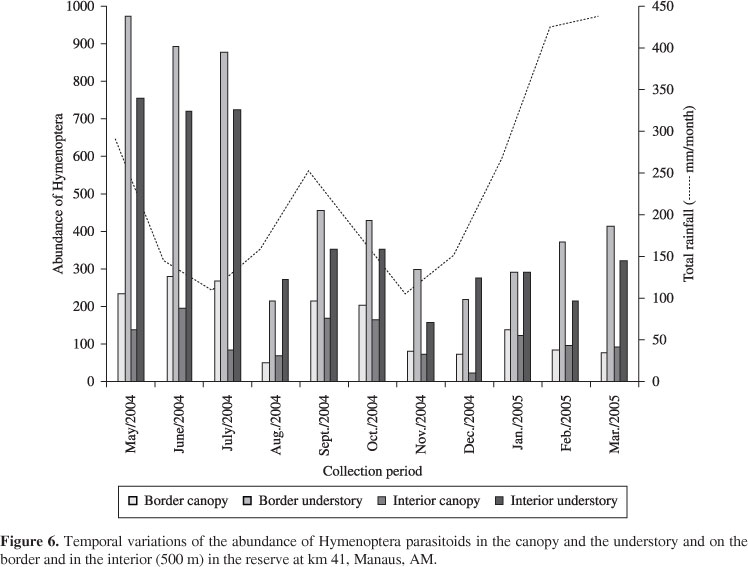Parasitoids are of great importance to forest ecosystems due to their ecological role in the regulation of the population of other insects. The species richness and abundance of parasitoids in the forest canopy and understory, both on the borders and in the interior of a tropical forest reserve in Central Amazonia were investigated. For a 12-month period, specimen collections were made every 15 days from suspended traps placed in the forest canopy and in the understory strata, both on the border and in the interior of forest areas. A total of 12,835 Hymenoptera parasitoids from 23 families were acquired. Braconidae, Diapriidae, Mymaridae, Eulophidae, and Scelionidae were the most represented in the area and strata samples. The results indicate that there were no significant differences in the species richness or abundance of Hymenoptera between the forest borders and the inner forest. The data does show that the presence of Hymenoptera is significantly greater in the understory in both the border and interior areas than in the canopy (vertical stratification). Aphelinidae and Ceraphronidae were significantly associated with the inner forest, while the other seven families with the border of the reserve. The abundance of Hymenoptera parasitoids presented seasonal variations during the year related to the rainy and dry seasons.
Hymenoptera; parasitoids; Amazonia; stratification; tropical forest








